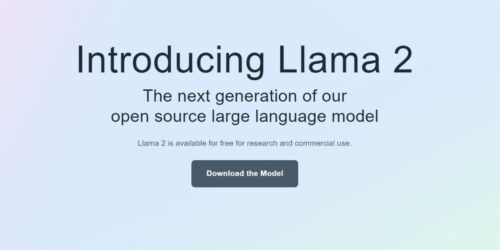OpenAI Plans Employee Stock Sell-off for Funding, While Microsoft Abandons GPT
OpenAI in Talks with Investors for Potential Stock Sale, Seeking Valuation of $80-90 Billion. This artificial intelligence startup is looking to sell stocks at a valuation almost triple its earlier value earlier this year.
The Wall Street Journal reported that the deal is expected to allow employees to sell their existing shares, instead of issuing new stocks to raise additional capital. Sources say OpenAI has begun convincing investors, stating that the company’s revenue is expected to reach $1 billion this year and will increase by several billion dollars in 2024.

The figure of $1 billion aligns with the number reported in August. It’s been stated that OpenAI generates $80 million in monthly revenue, surpassing the $28 million for the entire year of 2022. The introduction of ChatGPT Plus, a $20 monthly subscription version launched in February, has been driving OpenAI’s revenue growth.
On the other hand, selling stocks allows employees to understand the value of their equity without having to wait for the company to go public. It can help attract top talent, create liquidity, and bring in new valuations for OpenAI. A valuation of $80 billion or higher would make OpenAI one of the world’s most valuable startups, trailing only ByteDance and Musk’s SpaceX.
The money raised is significant, but the spending is even more substantial.
OpenAI’s goal is to sell existing stocks worth hundreds of millions of dollars to Silicon Valley investors. In April of this year, OpenAI secured over $300 million in funding from investors including Sequoia Capital, Andreessen Horowitz, Thrive, and K2 Global, valuing the company at $29 billion. This is unrelated to a significant investment announced by Microsoft earlier this year, which was completed in January with an investment size of around $10 billion. According to incomplete statistics, prior to accepting the $10 billion investment from Microsoft, OpenAI had already received $4 billion in investments within its seven-year existence. With this, OpenAI has accumulated a total funding amount of $14.3 billion.
Although there were reports as early as May that OpenAI was seeking to raise more funds, if the measure of selling shares continues, it won’t provide additional operational capital for OpenAI. Instead, it will only allow its employees to divest a portion of their shares.
In May, The Information reported that three individuals familiar with OpenAI’s financial situation revealed that the company’s losses had approximately doubled to around $540 million due to the development of ChatGPT and recruiting key employees from Google. Dylan Patel, Chief Analyst at consulting firm SemiAnalysis, estimated that running ChatGPT costs $700,000 per day.
According to Fortune’s disclosure, out of OpenAI’s total expenditure of $544.5 million in 2022, $416.45 million went to computation and data, $89.31 million to employee expenses, and $38.75 million to operational expenses for unspecified specific items. These costs had accumulated prior to receiving Microsoft’s initial $10 billion investment earlier in the year.
In the early hours of September 21, OpenAI announced the upgrade of its text-to-image tool, DALL·E, to DALL·E 3, integrating it natively into ChatGPT. Compared to last year’s DALL·E 2, DALL·E 3 significantly improves the understanding of text and the quality of generated images for the same prompts. The longstanding issue of “inability to generate text on images” has also been resolved in this upgrade.
On September 26, OpenAI launched multimodal ChatGPT, introducing voice and image capabilities for Plus and Enterprise users, allowing users to interact with ChatGPT via voice or display images of the discussed content. Voice functionality will be available on iOS and Android (opt-in in your settings), while image functionality will be available across all platforms.
Additionally, on August 16, OpenAI announced the acquisition of the Global Illumination team, marking OpenAI’s first external acquisition since its founding in 2015, although the financial details of the transaction were not disclosed.
Despite an increase in revenue following the launch of the paid version of ChatGPT in February, as more customers utilize its artificial intelligence technology and the company invests in training future versions of the software, these costs are expected to continue to rise. Microsoft and other recent investors have covered most of these costs. However, if OpenAI cannot achieve profitability soon, they might cease their investments.
Simultaneously, on August 24, media reported that OpenAI CEO Sam Altman plans to seek funding in the latter half of the year, visiting places like Abu Dhabi, the capital of the UAE, with the funding scale expected to be no less than $100 billion.
Reportedly, Altman’s pitch to venture capitalists extends beyond AGI (Artificial General Intelligence). He stated that OpenAI’s goal is to achieve Superintelligence, such as curing cancer within a month. However, OpenAI is still far from this objective, and the amount of funding required for this goal is staggering.
Currently, Altman does not have plans for fundraising through an IPO. In June of this year, he mentioned that he is not keen on going public due to concerns about facing lawsuits from the public market and Wall Street. He explained that peculiar decisions might be made when developing AI, which might seem odd to public market investors.
The biggest investor can’t hold on anymore.
After Microsoft’s earlier investment of $10 billion in OpenAI, the company acquired a 49% stake in OpenAI. As part of the deal, OpenAI committed to collaborating with Microsoft and integrating its AI software with Microsoft’s products in exchange for computational resources to train and run its models. Microsoft has indeed been integrating AI features into most of its software products, including Windows Copilot based on GPT-4. However, the use of large-scale models has also posed challenges for Microsoft.
The company is concerned that the costs of running these AI features, given Windows’ over 1 billion global users, could escalate rapidly. Microsoft doesn’t want to forgo the economic benefits brought by its new AI products, so it is seeking low-cost alternatives.
In recent weeks, Peter Lee, who oversees Microsoft’s 1,500 researchers, instructed many of them to develop conversational AI that might not match GPT-4’s performance but would be smaller in scale and significantly cheaper to operate.
Microsoft’s research team reportedly doesn’t harbor illusions about developing large AI models like GPT-4. The team lacks the same computational resources as OpenAI and doesn’t have an abundance of personnel to provide feedback on LLM (large language model) responses for engineers to iterate upon.
Microsoft’s efforts to shift to more efficient AI models are still in the early stages. However, the company is said to have started testing internally developed models in services like Bing Chat.
Mikhail Parakhin, Head of Microsoft’s Search division, previously stated that Bing Chat relies 100% on the creativity and precision modes of GPT-4. However, in its balance mode, it employs a new model called Prometheus and the Turing language model. The latter is not as powerful as GPT-4: it can identify and answer simple questions but passes more challenging questions to GPT-4.
On the coding front, Microsoft recently unveiled its 1.3 billion parameter Phi-1 model, reportedly trained on “textbook-quality” data, capable of generating code more efficiently but not yet up to GPT-4’s standards.
The company is also exploring other AI models, such as Orca, an open-source Llama-2 model based on Meta. Orca performs close to OpenAI’s models despite being smaller and consuming fewer resources.
Reportedly, Microsoft’s AI research division has about 2,000 Nvidia GPUs at its disposal. Lee has ordered most of these GPUs to be used for training more task-specific and efficient models rather than more general-purpose GPT-4.
While it’s undeniable that OpenAI and other developers, including Google and Anthropic, are ahead in developing advanced LLMs, Microsoft might be able to participate in the competition to build models of similar quality to OpenAI’s at an extremely low cost.

